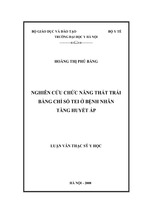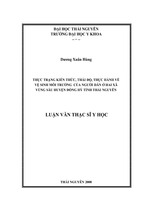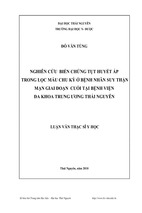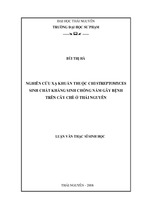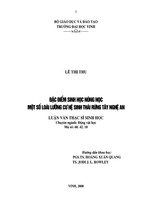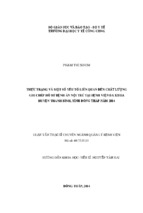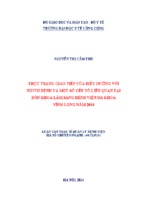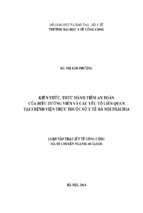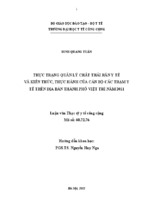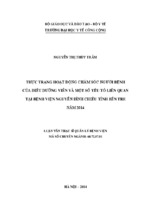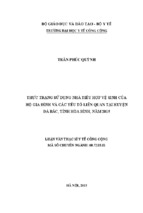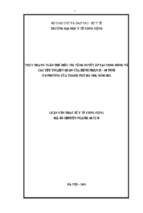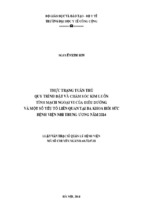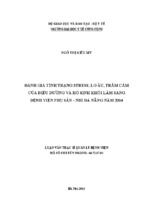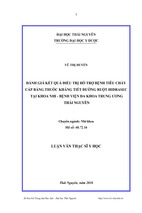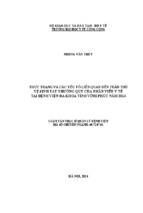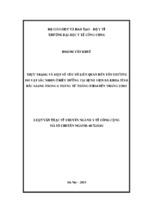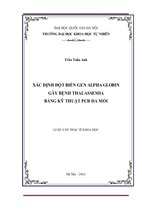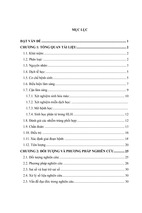Culture Emergence in International Cross-Cultural
Management Contexts: The Different Roles of
Values, Expectations, and Contingencies
A thesis submitted in fulfilment of the requirements
for the degree of Doctor of Philosophy
Xibao Zhang
B. Agr., MBA
School of Business Information Technology
Business Portfolio
RMIT University
July 2008
DECLARATION
I certify that except where due acknowledgement has been made, the work is that of the
author alone; the work has not been submitted previously, in whole or in part, to qualify for
any other academic award; the content of the thesis is the result of work which has been
carried out since the official commencement date of the approved research program; and, any
editorial work, paid or unpaid, carried out by a third party is acknowledged.
Xibao Zhang
ii
ACKNOWLEDGEMENTS
Three years of hard work has culminated into this thesis. Even though I have been working in
academia for over ten years, it still has been a major undertaking for me. However, this would
not have been possible were it not for the guidance, support, help, understanding, and
encouragement given me by so many people in this arduous and yet very rewarding process.
Therefore my sincerest thanks are due to all these people who contributed in various ways to
the completion of my PhD study.
I would first like to express my profound appreciation to my supervisors, Professor Bill
Martin and Associate Professor Hepu Deng. They are the best supervisors that one can
possibly have. I should thank them not only for their insightful guidance and unrelenting
support, but also for their open-mindedness and encouragement. They let me “roam” in the
“ocean of knowledge” and choose a topic that I am really interested in. They watched me
from a distance and cheered me on, while at the same time they were always there when I
needed guidance and support. At times, their supervision could also be very “hands-on”,
finding precious time in their busy schedules to read and re-read the various drafts of my
thesis, for example, and scrutinizing the minutest details in them. When I once summed up
my courage to give them a “deadline”, they did not turn on their supervisor status and “talk
down” to me; rather they tried very hard to accommodate my needs. In the terminology of this
thesis, they are very “low-SD”. Thank you very much, my teachers!
I would also like to thank RMIT University for providing me with the Scholarship that made
my PhD program financially possible. The people in RDU should be acknowledged as well.
Every time I contacted them, they always went out of their way to help. I would especially
like to thank Prue Lamont, who, as I recall, even responded to my email on a Sunday
afternoon to reactivate my access card.
The Chinese and expatriate interviewees involved in this research project also deserve a
special thank-you. They found time in their busy work schedules to be interviewed, often with
urgent business waiting at their heels at the same time. And my appreciation should also go to
my Chinese postgraduate students who did the transcription of the Chinese interviewees.
They took some of the tedious work away and lightened up my work load.
Of course, I would also like to mention my fellow students in the research facility. Their
iii
willingness to share knowledge and information, their eagerness to help, and their friendliness
and emotional support, would leave an enduring impression deep in my heart. You made me
feel that I was not alone, but part of a cohort in various stages of academic grooming.
Last but not least, I would like to express my appreciation to my family, especially my mother,
my wife, and my son. I feel guilty to my mother for not being able to fulfill my filial
obligations to her. But she always told me not to worry about her and encouraged me to strive
for excellence in my life. My wife has a career of her own. But she took care of the family so
that I could devote my full time to my studies and my other pursuits. Without her
understanding and patience, I would not have been able to go through this process. My son is
always a fountain of joy and inspiration for me. Every time I think of him, a sense of warmth
comes to my heart, and I keep reminding myself that I must excel in my career, and in life in
general, so as to be a good role model for him to look up to.
There are still people that I have not mentioned, both here in Australia and back in China,
who have helped me in my PhD study in one way or another and made a difference. My
heartfelt thanks go to all of you.
iv
TABLE OF CONTENTS
DECLARATION ..................................................................................................................ii
ACKNOWLEDGEMENTS.................................................................................................iii
TABLE OF CONTENTS...................................................................................................... v
LIST OF FIGURES .............................................................................................................xi
LIST OF TABLES..............................................................................................................xii
LIST OF CHINESE TERMS ............................................................................................xiii
LIST OF ABBREVIATIONS............................................................................................ xiv
LIST OF PUBLICATIONS................................................................................................ xv
ABSTRACT…… .................................................................................................................. 1
CHAPTER 1 INTRODUCTION ........................................................................................ 4
1.1 BACKGROUND ........................................................................................................ 4
1.2 RESEARCH QUESTIONS ......................................................................................... 6
1.3 RESEARCH OBJECTIVES ........................................................................................ 8
1.4 SCOPE........................................................................................................................ 8
1.5 RATIONALE.............................................................................................................. 9
1.5.1 The Trend of Globalization.................................................................................. 9
1.5.2 The Need for a New Conceptualization of Culture............................................. 10
1.5.3 The Need for Conducting Culture Research in the Chinese Context................... 12
1.6 RESEARCH METHODOLOGY............................................................................... 14
1.7 RESEARCH METHOD ............................................................................................ 15
1.8 SUMMARY OF FINDINGS ..................................................................................... 16
1.9 LIMITATIONS OF THE STUDY............................................................................. 17
1.10 ORGANIZATION OF THIS THESIS .................................................................... 17
CHAPTER 2 LITERATURE REVIEW: THE CONCEPTUALIZATION OF
CULTURE .................................................................................................. 19
2.1 TRADITIONAL CONCEPTUALIZATIONS ........................................................... 20
2.1.1 The Concept of Culture ..................................................................................... 20
2.1.2 Early Scientific Definitions................................................................................ 20
2.2 VALUES-CENTERED DEFINITIONS OF CULTURE IN EARLY
MANAGEMENT LITERATURE ............................................................................. 23
2.2.1 The Centrality of Values.................................................................................... 23
v
2.2.2 Other Elements of Culture ................................................................................. 25
2.2.3 Level of Analysis............................................................................................... 26
2.3 CULTURE IN INTERNATIONAL CROSS-CULTURAL MANAGEMENT
RESEARCH.............................................................................................................. 27
2.3.1 The Cross-National Comparison Stream ............................................................ 28
2.3.2 The Intercultural Interaction Stream .................................................................. 32
2.3.3 The Multiple Cultures Stream............................................................................ 39
2.4 THE EVOLUTION OF MODERN CONCEPTUALIZATIONS OF CULTURE....... 42
2.4.1 Anthropology .................................................................................................... 42
2.4.2 Sociology .......................................................................................................... 43
2.5 CONCLUSION......................................................................................................... 44
CHAPTER 3 TOWARD A DIALECTIC CONCEPTUALIZATION OF
CULTURE .................................................................................................. 45
3.1 RECENT DYNAMICS- AND PROCESS-ORIENTED CONCEPTUALIZATIONS 45
3.1.1 The Ecocultural Framework............................................................................... 45
3.1.2 The Cultural Evolution Theory of the Firm........................................................ 46
3.1.3 The Dynamic Multi-level Model of Culture....................................................... 47
3.2 ANCIENT CHINESE PHILOSOPHY....................................................................... 47
3.2.1 Overview of Ancient Chinese Philosophy.......................................................... 47
3.2.2 Key Principles of Ancient Chinese Philosophy .................................................. 48
3.2.3 Applications of Chinese Philosophy to Management Research .......................... 52
3.3 TOWARD A DIALECTIC CONCEPTUALIZATION OF CULTURE ..................... 53
3.3.1 Three Fundamental Premises ............................................................................. 53
3.3.2 Culture as a Dialectic Process of Interaction and Mutual Transformation........... 56
3.3.3 Theoretical and Methodological Implications .................................................... 61
3.4 CONCLUSION......................................................................................................... 67
CHAPTER 4 RESEARCH METHODOLOGY............................................................... 68
4.1 AN OVERVIEW OF AVAILABLE RESEARCH VARIETIES ................................ 69
4.1.1 Purpose of Research .......................................................................................... 69
4.1.2 Deductive versus Inductive Research................................................................. 70
4.1.3 Quantitative versus Qualitative Methodologies .................................................. 71
4.1.4 Philosophical Orientation .................................................................................. 72
4.1.5 Use of Theory.................................................................................................... 77
4.2 CROSS CULTURAL RESEARCH ISSUES ............................................................. 78
4.2.1 Early Discussions .............................................................................................. 78
vi
4.2.2 Contemporary Thoughts .................................................................................... 79
4.3 THE METHODOLOGICAL APPROACH OF THIS STUDY .................................. 82
4.3.1 The Dialectic Processual Perspective on Culture and its Methodological
Implications....................................................................................................... 82
4.3.2 Characterizing the Proposed Research Methodology.......................................... 84
4.4 CONCLUSION......................................................................................................... 86
CHAPTER 5 RESEARCH METHOD ............................................................................. 87
5.1 THE RESEARCH QUESTIONS............................................................................... 87
5.1.1 The Main Questions .......................................................................................... 88
5.1.2 The Subsidiary Questions .................................................................................. 88
5.2 THE CHOICE OF GROUNDED THEORY.............................................................. 89
5.2.1 The Fit of Grounded Theory as a Research Method for This Study .................... 89
5.2.2 An Overview of Grounded Theory .................................................................... 90
5.2.3 The Roles of Literature and Personal Experience............................................... 92
5.3 DATA COLLECTION.............................................................................................. 94
5.3.1 Semi-Structured Interviews of Chinese and Expatriates ..................................... 95
5.3.2 Non-Participant Observation in the SW-ICCM Workplace ................................ 99
5.3.3 Documentary Data Sources on SW-ICCM Contexts ........................................ 100
5.4 SAMPLING ............................................................................................................ 100
5.4.1 General Considerations of Sampling for Qualitative-Interpretivist
Research.......................................................................................................... 101
5.4.2 Purposeful Sampling and Theoretical Sampling............................................... 102
5.4.3 Factors Affecting Sample Size in Qualitative-Interpretivist Research............... 104
5.4.4 Sampling in This Research .............................................................................. 106
5.4.5 Sample Size Considerations in This Study ....................................................... 110
5.5 DATA CODING, ANALYSIS, AND THEORY FORMULATION ........................ 111
5.5.1 Data Coding and Analysis ............................................................................... 111
5.5.2 Theory Formulation and Presentation .............................................................. 115
5.6 CREDIBILITY AND RELATED ISSUES .............................................................. 117
5.6.1 Credibility Issues in Qualitative-Interpretivist Research................................... 118
5.6.2 Credibility Issues in Grounded Theory Research ............................................. 121
5.7 ETHICS CONSIDERATIONS ................................................................................ 123
5.8 CONCLUSION....................................................................................................... 123
CHAPTER 6 THEME I: PAY CONFIDENTIALITY ................................................. 127
6.1 DIFFERENCES IN PAY CONFIDENTIALITY BETWEEN CHINA AND THE
vii
WEST ..................................................................................................................... 127
6.1.1 The Chinese Perspective.................................................................................. 127
6.1.2 The Expatriate Perspective .............................................................................. 128
6.2 THE PATTERN OF PAY CONFIDENTIALITY IN SW-ICCM CONTEXTS IN
CHINA ................................................................................................................... 129
6.2.1 A Hybrid, Split Pattern .................................................................................... 129
6.2.2 The Influence of Chinese Culture .................................................................... 131
6.2.3 Concern with Internal and External Equity ...................................................... 132
6.2.4 Awareness, Understanding, and Acceptance .................................................... 133
6.3 EMERGENCE OF THE PATTERN OF PAY CONFIDENTIALITY IN SW-ICCM
CONTEXTS IN CHINA ......................................................................................... 135
6.3.1 The Chinese Perspective.................................................................................. 135
6.3.2 The Expatriate Perspective .............................................................................. 137
6.4 A FRAMEWORK OF THE EMERGENCE OF THE PAY CONFIDENTIALITY
PATTERN IN SW-ICCM CONTEXTS IN CHINA ................................................ 140
6.4.1 Further Discussion of the Hybrid, Split Pattern ................................................ 140
6.4.2 A Proposed Processual Framework.................................................................. 142
6.5 CONCLUSION....................................................................................................... 144
CHAPTER 7 THEME II: KNOWLEDGE/INFORMATION SHARING................... 146
7.1 DIFFERENCES IN KNOWLEDGE/INFORMATION SHARING BETWEEN
CHINA AND THE WEST ...................................................................................... 146
7.1.1 In-Groups and Private Knowledge/Information Sharing................................... 146
7.1.2 Face-Saving and Private Knowledge/Information Sharing ............................... 151
7.2 THE PATTERN OF KNOWLEDGE/INFORMATION SHARING IN SW-ICCM
CONTEXTS IN CHINA ......................................................................................... 153
7.2.1 Open Sharing and No In-Groups...................................................................... 153
7.2.2 Open Sharing and In-Groups Coexisting.......................................................... 156
7.2.3 The in-between Cases...................................................................................... 165
7.3 EMERGENCE OF THE KNOWLEDGE/INFORMATION SHARING PATTERN
IN SW-ICCM CONTEXTS IN CHINA................................................................... 168
7.3.1 Difference Awareness...................................................................................... 168
7.3.2 Action Formulation ......................................................................................... 169
7.3.3 Informant Experiences..................................................................................... 170
7.4 A FRAMEWORK OF THE EMERGENCE OF THE KNOWLEDGE/
INFORMATION SHARING PATTERN IN SW-ICCM CONTEXTS IN
viii
CHINA……............................................................................................................ 176
7.4.1 A Static Representation ................................................................................... 176
7.4.2 A Processual Representation............................................................................ 178
7.5 CONCLUSION....................................................................................................... 180
CHAPTER 8 THEME III: STATUS DIFFERENTIATION........................................ 182
8.1 DIFFERENCES IN STATUS DIFFERENTIATION BETWEEN CHINA AND
THE WEST............................................................................................................. 183
8.1.1 The Chinese Perspective.................................................................................. 183
8.1.2 The Expatriate Perspective .............................................................................. 185
8.2 THE PATTERN OF STATUS DIFFERENTIATION IN SW-ICCM CONTEXTS
IN CHINA .............................................................................................................. 189
8.2.1 Superior-Subordinate Relationships................................................................. 189
8.2.2 Peer Relationships ........................................................................................... 199
8.3 EMERGENCE OF THE STATUS DIFFERENTIATION PATTERN IN SW-ICCM
CONTEXTS IN CHINA ......................................................................................... 201
8.3.1 The General Situation on Status Differentiation............................................... 201
8.3.2 Form of Address.............................................................................................. 204
8.4 A FRAMEWORK OF THE EMERGENCE THE STATUS DIFFERENTIATION
PATTERN IN SW-ICCM CONTEXTS IN CHINA ................................................ 207
8.4.1 A Static Representation ................................................................................... 208
8.4.2 A Processual Representation............................................................................ 210
8.5 CONCLUSION....................................................................................................... 211
CHAPTER 9 FORMAL THEORY ................................................................................ 213
9.1 THE FORMAL THEORY....................................................................................... 214
9.1.1 A Static Representation ................................................................................... 214
9.1.2 A Processual Representation............................................................................ 216
9.2 FURTHER ELABORATIONS................................................................................ 223
9.2.1 Expectations and Contingencies as “Shock Absorbers”.................................... 223
9.2.2 Culture as both Stable and Changing ............................................................... 225
9.2.3 The Boundary of Culture ................................................................................. 226
9.3 CONCLUSION....................................................................................................... 230
CHAPTER 10 CONCLUSION ........................................................................................ 231
10.1 MAIN CONTRIBUTIONS OF THIS STUDY ..................................................... 232
10.1.1
Recapitulation of the Formal Theory........................................................... 232
10.1.2
Theoretical Contributions ........................................................................... 233
ix
10.1.3
Practical Implications ................................................................................. 237
10.2 LIMITATIONS AND DIRECTIONS FOR FUTURE RESEARCH ..................... 238
10.2.1
Generalizability .......................................................................................... 238
10.2.2
The Need for Further Theoretical Refinement............................................. 239
10.3 CONCLUDING REMARKS................................................................................ 239
APPENDICES................................................................................................................... 241
Appendix A
A Comparison of the Three Streams of Culture Conceptualization
in ICCM .................................................................................................... 242
Appendix B
An Ecological Framework of the Relationships among Variables
in Cross-Cultural Psychology................................................................... 246
Appendix C
The Dynamic Multi-Level Model of Culture ........................................... 247
Appendix D
The Yin-Yang Diagram ............................................................................ 248
Appendix E
The Purposes of Research ........................................................................ 249
Appendix F
The Deductive Research Process.............................................................. 250
Appendix G
A Comparison between Quantitative and Qualitative Research ............ 251
Appendix H
Major Paradigms in the Social Sciences .................................................. 252
Appendix I
Different Uses of Theory........................................................................... 253
Appendix J
Contribution of Different Sources of Inputs to Theme
Development ............................................................................................. 254
Appendix K
Schedule and Questions for the Semi-Structured Interviews ................. 255
Appendix L
Interviews, Sampling and Generalizing from Sample to
Population ................................................................................................. 257
Appendix M Types of Qualitative Sampling ................................................................. 258
Appendix N
Sample Size in Grounded Theory Articles, 2002-2004 ............................ 259
Appendix O
Consequences of Minimizing and Maximizing Differences in
Comparison Groups for Generating Theory ........................................... 261
Appendix P
Profiles of Chinese Interviewees............................................................... 262
Appendix Q
Profiles of Expatriate Interviewees .......................................................... 263
Appendix R
Sample Size Considerations of This Research ......................................... 265
Appendix S
The Fit between Purposes of Triangulation and Major Social
Science Paradigms .................................................................................... 267
REFERENCES ................................................................................................................. 268
x
LIST OF FIGURES
Figure 3-1 The Yin-Yang Dialectic Transformation in Culture Emergence ........................ 62
Figure 6-1 Emergence of the Hybrid Pay Confidentiality Pattern in SW-ICCM
Contexts ......................................................................................................... 145
Figure 7-1 A Static Representation of the Hybrid Pattern of Knowledge/Information
Sharing in SW-ICCM Contexts....................................................................... 178
Figure 7-2 A Processual Representation of the Emergence of the Hybrid
Knowledge/Information Sharing Pattern in SW-ICCM Contexts..................... 181
Figure 8-1 A Static Representation of the Hybrid Pattern of Status Differentiation in
SW-ICCM Contexts........................................................................................ 209
Figure 8-2 A Processual Representation of the Emergence of the Hybrid Status
Differentiation Pattern in SW-ICCM Contexts ................................................ 211
Figure 9-1 A Static Representation of the Hybrid Cultural Pattern in SW-ICCM
Contexts ......................................................................................................... 215
Figure 9-2 A Processual Representation of the Emergence of the Hybrid Cultural
Pattern in SW-ICCM Contexts........................................................................ 218
Figure 9-3 Culture as A Multi-Carriage Train .................................................................. 224
Figure 10-1 Time-Space Differences of the Cognitive Elements in their Mutual
Shaping with Behavior.................................................................................... 235
xi
LIST OF TABLES
Table 5-1
Credibility Assurance Measures Taken in This Research.................................. 125
xii
LIST OF CHINESE TERMS
Ah:
Chinese prefix denoting, in the ah-plus-first-name combination, a term of
endearment.
Ganbei:
Bottoms up (when drinking alcohol).
Guanxi:
Friend or friendship in a business context.
Han:
The Han Chinese, the majority ethnic group in China
Lao:
Chinese prefix denoting, in the lao-plus-sir-name combination, a term of
endearment for addressing a person who is older than the speaker.
Meiwenti: No problem; fine.
Shifu:
Master, or teacher, as in trade or martial arts.
Waidide: From out of town.
Xiao:
Chinese prefix denoting, in the xiao-plus-sir-name combination, a term of
endearment for addressing a person who is younger than the speaker.
Zhan Zhang: Station manager.
xiii
LIST OF ABBREVIATIONS
CD:
Cultural distance
CNC:
Cross-national comparison
CSOE:
Chinese state owned enterprise
DOC:
Directness of Communication
FDI:
Foreign direct investment
EU:
The European Union
FIE:
Foreign invested enterprise
FOA:
Form of Address
GATT:
General Agreement on Tariffs and Trade
GM:
General manager
GT:
Grounded theory
HR:
Human resources
ICCM:
International cross-cultural management
ICI:
Intercultural Interaction
IJV:
International joint venture
IT:
Information technology
JV:
Joint venture
KIS:
Knowledge/information sharing
MC:
Multiple cultures
NAFTA:
North American Free Trade Agreement
PC:
Pay confidentiality
PCE:
Private Chinese enterprise
SD:
Status differentiation
SW-ICCM:
Sino-Western international cross-cultural management
WIE:
Western invested enterprise
WOFE:
Wholly-owned foreign enterprise
WTO:
The World Trade Organization
xiv
LIST OF PUBLICATIONS
Zhang X, Martin B, and Deng H (2005). “Culture in MNC Subsidiaries in China: The Holistic
Perspective”, Proceedings of the Fourth International Conference on Information and
Management Sciences, 1-10 July, Kunming, China.
Zhang X. and Deng H. (2006), “A Critique of Hofstede's Methodology in Cross Cultural
Research from the Chinese Dialectic Perspective”, The Second IACMR Conference
Proceedings, 15-18 June, Nanjing, China.
xv
ABSTRACT
Increasing globalization and economic integration have resulted in culturally diverse and
dynamic workplace realities. The dominant perspective on culture in international crosscultural management (ICCM), however, still views culture as fixed and immutable. Other
perspectives that regard culture as variable and emergent have emerged in recent years to
better accommodate the new workplace realities. The emerging perspectives, however, seem
to have gone to the other extreme, conceptualizing it as emergent and “in the making”.
Therefore, with regard to culture conceptualization, two opposing camps exist.
The aim of this study is to develop a perspective on culture which would integrate the views
of both opposing camps. By applying the principles of ancient Chinese philosophy, especially
the Yin-Yang principle, a balanced, holistic conceptualization was proposed which hold that
culture is composed of both a stable and a changing dimension, which dialectically transform
into each other to give culture a certain degree of stability and inheritability on the one hand,
and a momentum for change and variability on the other, in an ongoing, spiraling process of
cultural emergence.
Then this proposed conceptualization served as a conceptual scheme, and as a general
perspective, from which grounded theory (GT) research was conducted. Adopting the
interpretive paradigm, qualitative field data were collected by conducting semi-structured
interviews of Chinese and Western expatriate informants working in Sino-Western ICCM
(SW-ICCM) contexts in China, supplemented by non-participant observation and
documentary
data.
Specifically,
three
cultural
themes,
pay
confidentiality
(PC),
knowledge/information sharing (KIS), and status differentiation (SD), were developed for the
semi-structured interview and non-participant observation.
Next, the data were analyzed in grounded fashion, with a substantive theory developed from
data analysis in each of the three theme areas. Finally, the theme-grounded substantive
theories were compared and integrated to generate a formal theory that would apply to SWICCM contexts in general.
One of the major findings is that the emerging culture in the SW-ICCM context takes on a
hybrid form, which is distinct, and yet bears varying degrees of resemblance to its “parent”
national cultures. Such a hybrid pattern exists within a continuum with the Chinese and
1
Western cultures at either end. It can vary either continuously or discretely. Relevant Chinese
and Western cultural values and contextual factors contribute to such an emerging hybrid
pattern.
The other major finding is the demarcation of Cognitive State into three interrelated variables,
Values, Expectations, and Contingencies, each of which has a mutually conditioning
relationship with behavior. As defined in this study, Values are concerned with fundamental
rights-and-wrongs with regard to behavior, and are thus context-independent. Expectations
refer to a set of cognitive rules regarding appropriate behavior that a person develops through
interaction with other individuals in a particular context; as such it is context-dependent or
context-specific. Contingencies refer to ad-hoc selection of behavior according to the
behavior (and the values and expectations as reflected in behavior) of the cultural other.
Therefore it is occasion-dependent or occasion-specific.
The three cognitive variables are different in terms of the scope and duration of their mutual
shaping with behavior. Furthermore, they need not be consistent, and frequently are not,
among themselves. In other words, they are loosely coupled or even decoupled.
Metaphorically, they can be compared to a multi-carriage train, which allows for the relative
lateral movements by individual carriages so as to cope with bumps and turns in the tracks.
Similarly, the three cognitive variables provide a “shock-absorber mechanism”, so to speak,
which enables individuals in SW-ICCM contexts to cope with conflicts in cultural practices
and values, and to accommodate and adapt themselves to cultural contexts where people from
different national cultural backgrounds work together over extended time. It also provides a
powerful framework which explains how interactions by individuals in SW-ICCM contexts
give rise to emerging hybrid cultural practices characterized by both stability and change. In
addition, it can also help explain unexpected findings in previous culture studies.
One major theoretical contribution of this “multi-carriage train” perspective is its allowance
for the existence of inconsistencies among the three cognitive variables in their mutual
conditioning with behavior. Furthermore, inconsistencies may even exist within each of
Values, Expectations, and Contingencies themselves. This internal inconsistency view
contradicts the traditional internal consistency assumption explicitly or tacitly held by many
culture scholars.
The other major theoretical contribution, which follows logically from the first one, is to view
culture as an over-arching entity which is made of a multiplicity of Values, Expectations, and
Contingencies. This notion of one (multiplicity) culture to an organization leads to the
2
classification of culture along its path of emergence into nascent, adolescent, and mature
types, each of which is distinct in terms of the pattern of the cognitive variables and behavior.
3
CHAPTER 1
INTRODUCTION
The growing trend of globalization and economic integration has led to the emerging new
workplace realities that are characterized by cultural diversity and dynamism. The dominant
perspective on culture, on the contrary, still views it as stable and immutable. Out of this
conflict between theory and practice there are emerging conceptualizations that focus on the
dynamic dimension of culture. This study aims at developing a new conceptualization that
dialectically integrates both the stable and the dynamic dimensions of culture so as to offer a
balanced perspective.
In this chapter, the research questions will be put forth, and the background and rationale for
selecting this topic discussed. Then the objectives and scope of this research will be
elaborated. Presented next will be a summary of the research findings and their limitations
and directions for future research. Finally, the organization of this thesis will be outlined.
1.1
BACKGROUND
The dominant perspective on culture in international cross-cultural management (ICCM)
research is best exemplified by Geert Hofstede (1980a; 1991; 2001a), who defined national
culture as the “the interactive aggregate of common characteristics that influence a group’s
response to its environment” (1980b, p. 25). He maintained that his cultural dimensions
broadly characterize national culture in terms of its “average pattern of beliefs and values”
(1983, p. 78). Hofstede alternately defined culture as “the collective programming of the mind
4
that distinguishes the members of one human group from another” (1980b, p. 25), or “that
distinguishes the members of one group or category of people from another” (2001b, p. 9).
Such a conceptualization regards culture as a relatively stable entity, and as a set of relatively
stable values residing in people’s minds that guides their behavior. The rationale for this view
is self-evident, because otherwise there would be no justification for using Hofstede’s
dimensions to distinguish national cultures. Such a static view on culture, of course, is shared
by many scholars. This functionalist paradigm views culture as stable, cognitive values and
assumptions, and people act according to these stable cognitive rules of behavior.
In recent years, however, this static view of culture has been criticized for its failure to cope
with the dynamism, diversity, richness, and intricacy of culture, i.e., its dynamic, action side
(e.g., Lowe 2001; McSweeney 2002a, 2002b; Williamson 2002; Sackmann and Phillips 2004;
Leung et al. 2005). These scholars and others (e.g., Fang 2003) called for new
conceptualizations that focus on the dynamic, action side of culture.
Such a call for a new perspective on culture aligns with the developments in culture research
in other disciplines. In anthropology, for example, it has long been advocated that culture be
studied from the perspective of a native or insider (Rosaldo 1989). From this perspective, the
researcher does not see culture as reduced to several abstract dimensions; rather he or she is
involved in the variation, the rich dynamics within a culture, and views culture as internally
fragmented, contentious, heterogeneous, and “in the making” (Prus 1997, p. 38). In criticizing
and moving away from the dominant static perspective, however, it appears that the emerging
perspectives have gone to the other extreme, conceptualizing culture as totally rooted in
behavior.
It is proposed in this study that scholars need not go to extremes and polarize culture research
into two mutually exclusive camps. (Of course such a dichotomous and confrontational
division of conceptualization is the mainstream approach, since in this way assumptions of
each camp can be easily clarified and unified vis-à-vis the other, thereby simplifying
subsequent research.) On the other hand, ancient Chinese philosophy, especially the Yin-Yang
principle, can offer a third perspective, one that integrates the views of both camps, to arrive
at a more balanced conceptualization of culture.
The Chinese Taoist (or Daoist) Yin-Yang principle holds that reality is pervaded by Yin and
Yang forces. Yang stands for “the creative, developing, dominating, and manifest force and
has the male and heaven as its main images”, Yin, on the other hand, stands for “the receptive,
5
- Xem thêm -

